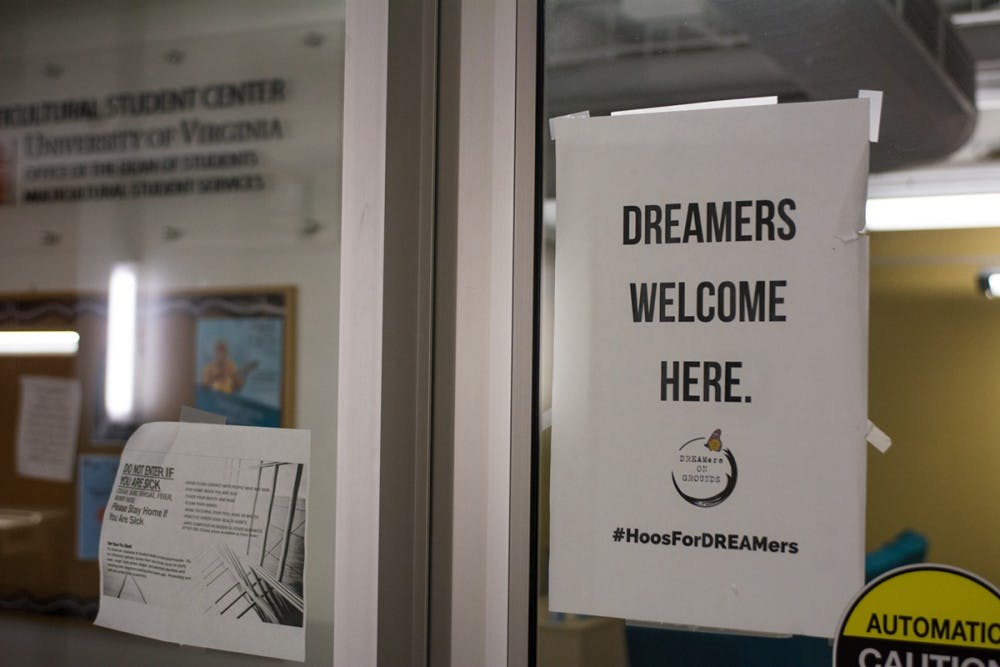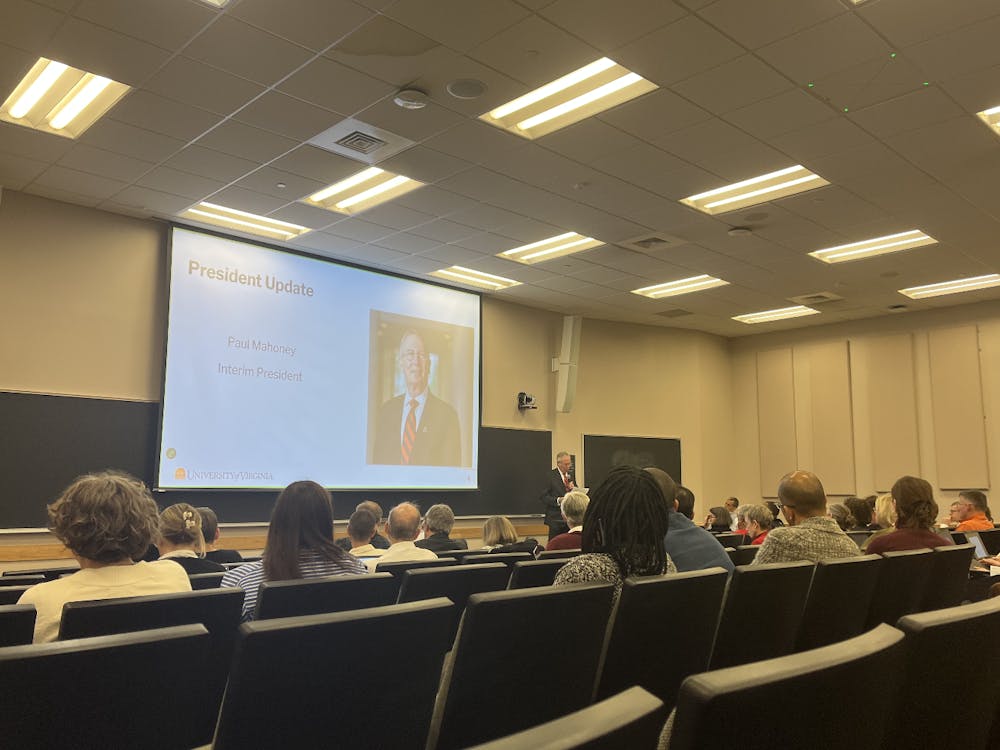Last August, two Latinx Lawn residents hosted a gathering in their rooms to welcome both new and returning Hispanic and Latinx students back to the University. A festive occasion turned sour when officers from the University Police Department broke up the gathering just before 11 p.m., as the last of the students present were preparing to leave. Those in attendance characterized one of the officers’ behavior as “aggressive” and said the first years who were there were “terrified.”
In contrast, the students said a gathering hosted by white Lawn residents nearby was asked to disperse in a much gentler manner. Instead of everyone being asked to leave their events — as was the case for the Latinx gathering — only those under 21 had to leave. The Latinx students felt they had been discriminated against by the officers.
That night was one of the first times at U.Va. that second-year College student Steven Radilla wished the University had a designated space for its Hispanic and Latinx students.
The number of Hispanic students at U.Va. has risen considerably in recent years. There are currently 1,078 Hispanic undergraduate students — a 22 percent increase from 882 students in 2013 and an 85 percent increase from 584 students a decade ago. Some students say that in many ways, the University isn’t providing adequate resources for this community to keep up with the expanding demographic.
To accommodate the growing population, some Hispanic and Latinx students are calling for a space to have as their own.
The idea of a space for Latinx students on Grounds isn’t new. Both Radilla, secretary for DREAMers on Grounds — an organization that advocates for undocumented students — and Diana Tinta, a third-year College student and vice president of Political Latinx United for Movement and Action in Society, said in interviews with The Cavalier Daily that Hispanic and Latinx students have been discussing and researching the notion for years.
However, now that representatives from a number of Hispanic and Latinx organizations at the University have come together — forming a group called “Juntos Podemos,” or “together we can” — what was once simply a thought is beginning to take shape into something more.
Currently, the Multicultural Student Center is the closest Latinx students have to their own space, according to Radilla. Located in the basement of Newcomb Hall, the MSC opened in October 2016 as a place for underrepresented and marginalized groups on Grounds to collaborate. While students say they’re appreciative of the space, at times, it just isn’t enough.
“The MSC is one space, but there are so many spaces on Grounds that are privileged to white students and wealthy students,” Radilla said. “When I walk by [Madison Bowl] and see people on their blankets and see people playing games on my way to work, I only see white students. Why should there only be one space?”
One of the concerns about the MSC is its size. Events held at the center can only hold 49 people. Tinta said this limitation makes it difficult for students to have a place to socialize and host events as a community, especially when other minority groups at the University also want to use it. Radilla said he’d like to see a location that’s more accessible than the MSC — not located in the basement of a building.
While the group is still discussing what exactly they want in the space, they’ve agreed that they hope to have resources to go along with it.
“When I talk about Latinx spaces, I don't think you can just give people a room and that's it,” Radilla said. “You can't just throw people in the space and think, 'Problem solved.' Along with that space, I would ideally like to see more resources for students.”
These resources may include a faculty and career advisor who can provide access to internships and scholarships tailored to Latinx students, Tinta said. She said it can be difficult for Latinx students to know where to turn for advising, and when they do find the resources, it often excludes their backgrounds and perspectives.
This concern was referenced in an open letter spearheaded by Juntos Podemos and released to the University community Monday. In the letter, the students wrote that it should not be the responsibility of only two staff members in the MSC to support the entire multicultural community. The letter has garnered 575 signatures from University students and organizations.
Both Radilla and Tinta emphasized that while they want the space and resources to be directed towards Latinx students, it can still be a place for everyone. In fact, they’d like to see more minority groups have their own space.
“I would even say that on my part, I want more student groups to get their own spaces because [the MSC is] not big enough and U.Va. is not doing their part in providing us all a space where we feel comfortable,” Tinta said.
Currently, black students are the only racial minority group with a designated space. Three houses on Dawson’s Row provide resources for black students, including the Office of African-American affairs located in Dawson’s Row No. 4. OAAA has a seven-person staff including a dean, two associate deans and an assistant dean.
The LGBTQ Center is also available in the basement of Newcomb Hall for LGBTQ students and allies. It is staffed by student volunteers and an assistant director.
While it may be a new concept at the University, other institutions across the country have or are planning specific spaces for Latinx students. In January, the University of North Carolina at Chapel Hill’s student senate voted unanimously in support of a Latinx center. Virginia Tech opened its own Hispanic and Latinx student center, “El Centro,” in 2016 as a space for research, programming and faculty and student enrichment, said El Centro’s Assistant Director Veronica Montes in an interview with The Cavalier Daily.
“The Latinx population at Virginia Tech is growing like crazy,” Montes said. “Students of color need this space. You can see the faces of the students when they go into the center and it's like, 'Oh yeah, I can be who I am here.' Their experience within the institution can be validated.”
Vicki Gist, director of Multicultural Student Services, said in an email to The Cavalier Daily that cultural centers also have the potential to lead to better recruitment, retention and graduation rates. Gist said she has not had any in-depth conversations with students regarding a Latinx student space.
“Many higher education scholars have conducted research that shows it is beneficial for students of color on predominantly white campuses (and under-represented/marginalized students in general), to have multiple places where they feel validated and can build community, including cultural centers,” Gist said.
It’s that sense of belonging that Tinta wishes she had at the University and believes a Latinx student space could bring her. Although she’s originally from a predominantly-white area, she said her life at U.Va. has been difficult. She’s involved in the Latinx community, yet she still feels isolated.
“I love the MSC,” Tinta said. “It's a great place, and that's probably the only place I feel entirely safe. Everywhere else, I have to second guess what I say. That's why I feel a Latinx space is really important. So that there can be a place where I don't have to change who I am to be accepted by the University, by the faculty or even by other U.Va. students.”

This article is part of a series published in The Cavalier Daily this week looking at the experiences of Latinx/Hispanic students at U.Va. and elements of a recently-published open letter addressed to the University community.
The full series:







